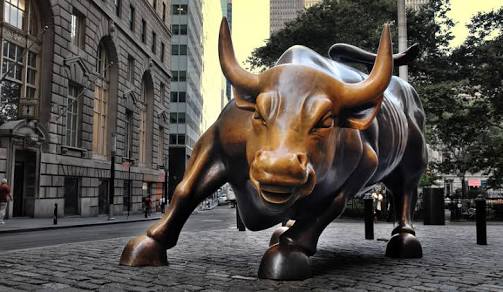By Nidhi Rajgor
While the US stock markets have been on fire for a good six weeks since elections with S&P 500 and Nasdaq posting gains of about 5% since election night and DOW Jones industrial average tacking on 8% and approximately 20,000 mark, the bond market has been under significant pressure. Hence one of the biggest questions put forward by investors now, is whether the record rally in US Bonds that began in 1981 has reached its end? Bonds are considered as conservative holdings which have produced stellar returns for decades due to taming inflation and other factors but the economic recovery could now reverse the process by driving interest rates higher, causing the bond prices to fall. Yield on 10-year US treasury rose to around 2.5% in March 2016 after hovering around 2% for four months.
US economy is gaining steam, though slowly leading to rise in interest rates which drives bond prices down but, the progress could be derailed by government debt problems in the US and Europe, rising oil prices and ripple effect from a slowdown in China. These uncertainties have led the investors to play safe and stock up on US treasury securities, the modern world’s safe haven. The high demand has driven the bond prices up and forced yields to extraordinary low.
Fed here has a pivotal role to play. The Fed’s main tool is its strong influence over short-term interest rates, such as the Fed funds rate that banks charge each other for overnight loans. The Fed does not have as much direct control over long-term rates, which usually are higher because investors demand a premium for the risks they face, such as higher inflation, when they tie their money up for longer periods. But long-term rates are in part a bet on what short-term rates will be in the future, so the Fed’s downward pressure on short-term rates puts downward pressure on long-term ones as well. To further stimulate the economy, the Fed has resorted to trying to reduce long-term rates by purchasing long-term bonds, which increases demand and raises prices, but this is only moderately effective.
If economic conditions improve and bonds seem too risky, investors may turn to stocks as they are thought to be the safest modes investments. This would flood money to stocks from bonds and undermine bond prices by reducing demand. For small investors, bonds could continue to provide diversification in the portfolio, one of the chief reasons for owning them, and bond losses, if there were any, could be offset by stock gains. Many experts say nervous investors can reduce their bond holdings, but eliminating them entirely could actually add risk by putting more eggs in the basket of stocks.
Bond markets all over the world are getting slaughtered after the European Central Bank announced it would extend its quantitative easing program until at least December 2017, but would taper its purchases from 80 billion Euros per month to 60 billion Euros per month.
Selling is having the biggest impact on Italian yields with the 10-year higher by more than 15 basis points to 2.03%. The tapering of the ECB’s bond buying program has reignited worries surrounding the health of the Italian banking system. Monte dei Paschi, the world’s oldest bank, is teetering on the brink of default and is currently in talks to be rescued.
And the rest of the bond markets in peripheral Europe are under pressure as well. Portugal and Spain’s 10-year yields are up by 14 bps and 11 bps apiece to their respective 1.55% and 3.58% as contagion fears take hold.
Even the safety of German bonds has come into question with the 10-year yield up 9 bps at 42 bps. That’s the highest it has been since January.
Whereas in the US, yields are up as much as 6 bps at the long end of the curve, and are approaching their cycle highs. The 10-year yield is flirting with the 2.40% level, and would need to hit 2.45% to put in its highest reading since the middle of 2015.




